The Model Mayhem interview: Stephen Thorne
Stephen Thorne has spent most of his life covering the news. For more than 30 years, he has worked as a photographer, reporter, and editor for various media outlets in Canada. He’s traveled the world, from Kosovo to South Africa, reporting on everything ranging from armed conflicts to maritime disasters. He was the only journalist attached with the 3rd Battalion, Princess Patricia’s Canadian Light Infantry, in Afghanistan during Canada’s first wartime assault in 50 years. He’s journeyed to the bottom of the North Atlantic in a submersible to visit a previously undiscovered WWII shipwreck. He’s interviewed presidents, soldiers, celebrities, and even royalty — the list of his accomplishments is nearly endless.
Stephen has received numerous awards for his journalistic work, and dozens of notable newspapers and magazines throughout the world — including Time, Weekly World News, and the International Journal — have featured his photography.
Recently, Stephen has taken a break from photojournalism, and has chosen to direct his energy towards artistic photography — mainly in the hopes of developing further as both a photographer and a creative human being.
— MM Edu
MM Edu: Tell us about how you got started as a photographer, from what initially inspired you to becoming a professional. Specifically, what made you become a photojournalist and why did you choose war photography?
Stephen Thorne: I grew up in a household filled with books and magazines. I was reared on publications like LIFE, National Geographic and Sports Illustrated. The ’60s and ’70s were an era of war and great social unrest. It was a very visual time. There were two channels on the TV, no Internet, and digital wasn’t even a word as we know it today. The photograph still had incredible power, and the ’60s, particularly, produced an uncommon number of iconic images. The King and Kennedy assassinations, the civil rights movement, the Vietnam War and all the protests associated with it — Kent State being the most graphic example. Those images had tremendous impact on people in general, and me, in particular.
I started taking pictures when I was about 10 years old. I always had a camera. As a teenager, I always made money as a photographer, right through university. My first job out of school was as a reporter/photographer for my hometown newspaper. I went from there to Canada’s national wire service, The Canadian Press. I spent 28 years there, primarily as a writer, editor, broadcaster and, when overseas, photographer.
I’ve been writing since I could read and surrounded by photographs all my life and it just seemed a natural continuation of what I was. I mean, I didn’t go searching for a career; it just evolved that way. I loved the privileged access afforded to the media — the fact that we were the public’s eyes and ears and, when I did it best, what I told my readers in my writing and showed them in my photographs were things they didn’t know or hadn’t seen before. I came to learn that the power of the written word can be humbling and that a photograph really can be worth a thousand words.
Some journalists consider covering major-league sports the pinnacle of their career; for others it’s covering the president or the prime minister; some want to become columnists or shoot major documentary projects like Sebastiao Salgado. For me, it was becoming a war correspondent — telling people, firsthand, and showing them through my pictures what our troops were doing on the other side of the world, the sacrifices they were making and hardships they were facing. I felt like it was my destiny.
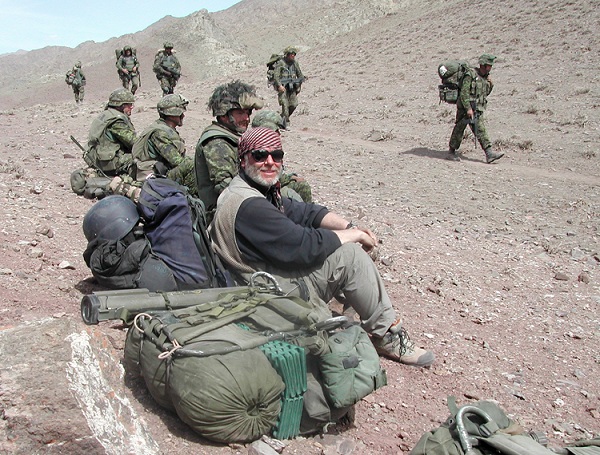
“Some journalists consider covering major-league sports the pinnacle of their career; for others it’s covering the president or the prime minister; some want to become columnists or shoot major documentary projects like Sebastiao Salgado. For me, it was becoming a war correspondent.” – Stephen Thorne
MM Edu: You spent 20+ years covering disasters and wars (from riots in Soweto, to war in Kosovo and Afghanistan); can you give us an insight into what that’s like?
Stephen: I felt a deep sense of responsibility in what I was doing. For much of the time I was in Kosovo and the first year I was in Afghanistan, I was often the only reporter or photographer present. I was deeply committed to that, to bear witness on behalf of Canadians and to tell the stories of the enlisted guys — the grunts — based on what I saw them do and what they said, not what some political spin-master, public affairs spokesman or senior officer wanted us to hear.
As a disaster reporter, I always tried to tell the human stories — from the perspectives of eyewitnesses, survivors and families.
All that catches up with you after 20 years or so. It’s all-encompassing when you’re doing it, but when you stop it’s hard, very hard — first to give it up and then, when you come crashing back to Earth, to deal with everything you’ve seen and heard. The disasters were the most difficult, actually.

Photographer: Stephen Thorne
MM Edu: It’s hard to imagine what that’s really like. How are you able to remain calm and do your job in those situations?
Stephen: I always hearken back to a picture story I did early in my career. It was about a school for the blind that was being torn down. They were moving to new quarters and this complex was a landmark in my hometown of Halifax. I shot a whole photo-essay inside there, but I needed a broader perspective to take the reader in there. The best picture of this place was from above and the best vantage point was the roof of a building kitty-corner to it. It was the tallest high-rise in Halifax at that time. Problem is, I’m deathly afraid of heights — high buildings, to be precise. I get vertigo. So I go up to the roof of this high-rise and literally get down on my hands and knees and crawl over to the edge. My heart’s pounding. I start shooting and suddenly I’m not afraid any more. As soon as I put that camera to my eye, I’m calm. Well, calmer.
Covering violence and war was like that. You have a job to do and that’s where your focus is. I’d get totally absorbed in my work, whether it was shooting or observing or interviewing or writing. In Afghanistan, I would get my fixer and driver to watch out for me when I was shooting features in the Kabul markets and places like that. I’d tell them “20 minutes” because after 20 minutes you were at much greater risk of being snatched or killed. There was a price on our heads and word would get around that you were there. So we’d go shooting in the golden hour around 5 p.m. and I’d get some nice feature stuff. They’d make sure I didn’t step in any holes and that no one was stalking us, then after 20 minutes they’d drag me out of there, kicking and screaming for more.
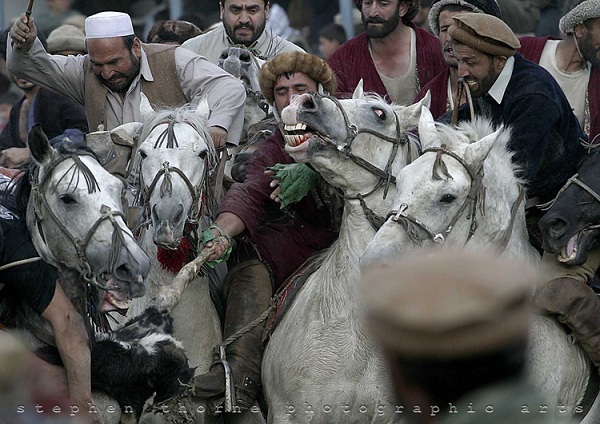
Photographer: Stephen Thorne
“My heart’s pounding. I start shooting and suddenly I’m not afraid any more. As soon as I put that camera to my eye, I’m calm. Well, calmer.” – Stephen Thorne
MM Edu: Would you consider yourself an adrenaline junkie? If not, how do you overcome fear?
Stephen: No, not an adrenaline junkie. It is addictive, though. The high after you walk away from a firefight or a Sowetan race riot unharmed is like nothing you’ve ever experienced before. You’re literally giddy from the adrenaline, like someone’s been pumping it into you on an IV. After a few months of that, you go home and you crash, big-time.
On my first combat assault my knees were shaking uncontrollably before we got on the helicopter. I thought about some of the great war correspondents of the Second World War, some of whom I knew personally, like Canadians Bill Stewart and Ross Munro, both of whom reported for CP from the Normandy beaches. I’d read all of Ernie Pyle’s dispatches. The pictures from my youth all came flooding back. Then I looked over and there was a padre giving the troops communion. I’m not particularly religious, but I took it and I calmed right down. Total peace. I knew I was where I belonged and I was prepared for whatever was in store for me.
MM Edu: Your work included being embedded with the troops in Afghanistan and accompanying Canadian troops on their first combat offensive in 50 years. Tell us about the experience of being in a combat zone and going out with the troops.
Stephen: Hard. Hard. Hard. That first combat assault was on a mountain called The Whale’s Back. And it was just like that, a whale’s back — long and undulating. I was with eight recon troops (up here we call them recce — like “rekky”); they’re among the best guys to be with because they’re always first in and last out. We were dropped off partway up this mountain and climbed to about 8,900 feet above sea level. The boys were packing about 100 pounds of gear, weapons and ammunition. I probably had 50 or 60, with my flak jacket, helmet, satellite equipment and required amount of rations and water. I was exhausted by the time we reached the top and I filed my story, but I didn’t sleep much that first night. The B-52s were dropping huge bombs in the mountain passes near the Pakistan border about two kilometers across this valley. We had front-row seats. The explosions were like nothing you could imagine. It was only later on I learned that we’d come within a few seconds of being bombed ourselves. The next day we humped the length of the mountain and stumbled on an al-Qaida/Taliban bunker and cave complex. The nearest assault troops were U.S. 10th Mountain boys. They came in, blew the bunker to bits, killed some guys and swarmed this castle-like rock formation, shooting into these wormholes and tossing in grenades and satchel charges. I had a choice — shoot and transmit the pictures I dunno when (four days later, it turned out), or set up the sat dish and call our radio desk live in Toronto. So that’s what I did, and gave a live play-by-play to our radio desk with machine-guns and grenades going off in the background. Then I dictated a story to our World Desk, with the editor urging me to get off the phone every time there was an explosion.
Eventually I ran the hundred meters over to this battle to do some shooting — photographing, that is. I got some nice stuff of our snipers covering the flanks, then started to move toward the gunfire when somebody yelled “10-pound satchel charge; one minute.” Up to that point, all the satchel charges had been three pounds and they were changing the shape of this huge rock formation. I said “F**k this,” and ran back across the ridgeline to my crater. I collapsed from oxygen deprivation. The boys were laughing their heads off, but that 10-pound charge inside an enclosed cave was really devastating. Gunfire I can endure; I’m not fond of explosions.
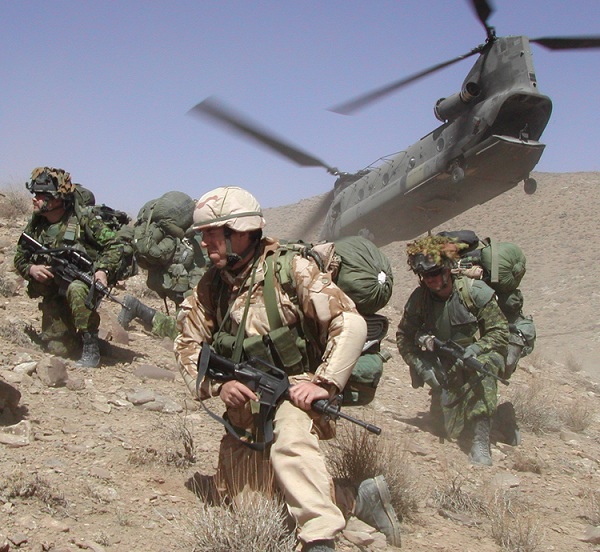
Photographer: Stephen Thorne
MM Edu: So, you’ve seen all this action, which must be exhilarating and very emotional, when did you decide you needed to make a change and how hard was it for you to make the transition?
Stephen: After three years coming and going from Afghanistan, my bosses made me the main copy editor on our parliamentary desk in Ottawa. 8 a.m.-4 p.m., Monday-Friday. No travel. No pressure — relatively speaking, at least. I fought it like crazy at first, and then embraced it. My wife had left. I was diagnosed with PTSD. I needed something to help me find some sense of peace and serenity. Eddie Adams, who shot the Saigon street execution in 1968, had turned to nudes for a time after he stopped shooting news. Don McCullin, who has shot the heart of darkness in war, famine, droughts, he now shoots landscapes in England. I decided it was time. I’d always wanted to try using the camera to express my vision — reverence, I guess you could say — of women. So I started this stuff late in 2006.
MM Edu: You mentioned Eddie Adams and Don McCullin, and it’s interesting that both of them made similar transitions later in life.
Stephen: Well, those guys paid a price for all the great pictures they took. You can see it etched in Don McCullin’s face. I met Eddie Adams in Kandahar. He was only on the base for a short time but he spent nearly half an hour of it with me, of all people. A prince of a man. He went on to do these workshops for young, aspiring photographers. He died about two years after we met, from Lou Gehrig’s disease.
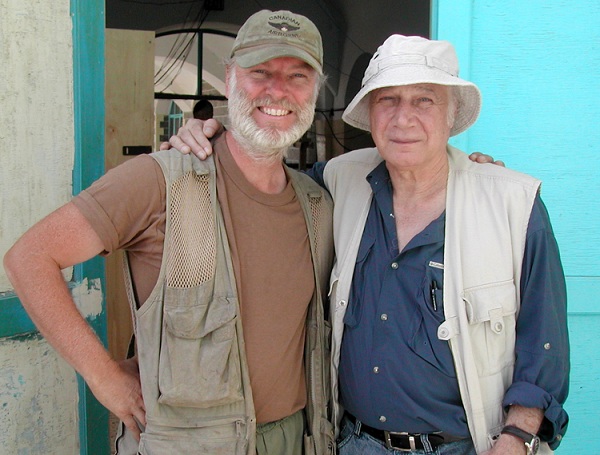
MM Edu: Let’s focus on some of your more recent work. I read a quote of yours that says you’re now “seeking art and tenderness in pictures” and that you “want to contribute to the beauty of life.” How has your work as a photojournalist influenced you?
Stephen: I guess I try to do stuff that is as far away from that stuff as I can make it. I am not a particularly principled guy. I mean, I don’t take high moral stands on many issues, I guess because I spent most of my career trying to be impartial. But I won’t shoot models with guns or depicting violence in any way. It’s not what this about for me. To me, it trivializes reality, and I just won’t do it. Besides that, I want to depict a woman’s beauty with some sense of reverence. And in doing so, for me, the experience of collaborating with someone and creating nice art is almost spiritual. I call it “a balm to the sores wrought by tragedy, war, torment and heartbreak.” It soothes and feeds the soul. I love this stuff.

Photographer: Stephen Thorne; Model: ZeEe S
“I want to depict a woman’s beauty with some sense of reverence. And in doing so, for me, the experience of collaborating with someone and creating nice art is almost spiritual.” – Stephen Thorne
MM Edu: And, how would you describe your style of photography now?
Stephen: I don’t know if it fits any genre. Art, I guess. It’s nothing practical, I can tell you that.
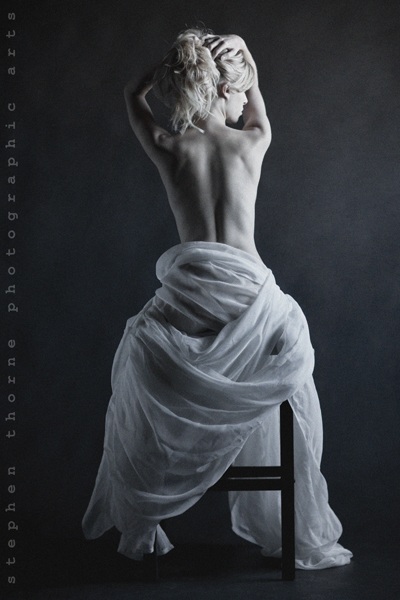
Photographer: Stephen Thorne; Model: Emily i
MM Edu: What do you look for in an image? Who or what inspires you?
Stephen: I guess the signature qualities to most of my images are the light and the connection with the model, the emotion. I’ve taught myself studio lighting but I prefer natural light. I start with the light. I let it paint the mood and help the model find her way into that state of introspection or whatever. I like symmetry in a photograph. I guess I’m kind of traditional. I like my edges squared. I don’t go for a lot of gimmicks, concepts or bizarre makeup. I’m not a big fan of fashion, per se, but I appreciate when fashion photography crosses into art.
I used to review photography books and collections. I have studied a lot of photographers, not from an academic standpoint, but I love to immerse myself in great work, see what makes it great, take from it what I can in terms of understanding, and let it guide me. Related to this stuff, particularly, I love the work of the great French photographers of the 1960s and ’70s, Jeanloup Sieff and Jean-Francois Jonvelle. Jonvelle shot what he called “the poetry of the everyday” — beautiful women doing everyday things like packing a suitcase or reading a book or brushing their hair. Robert Doiseneau, who shot “The Kiss” on a Paris street, was another Frenchman. He said: “I get on well with ordinary people. We talk… When I photograph them… it’s very brotherly. And it’s better, isn’t it, to shed some light on those people who are never in the limelight?” I like that a lot. Yousuf Karsh is an icon. In fact, I wrote his obit for the wire. David Hamilton was controversial but great, nonetheless. I admire Patrick Demarchelier, Greg Gorman, Herb Ritts. I’m not a big fan of Annie Leibovitz. She’s achieved fame, there’s no denying it. A tremendous success. But I find a lot of her stuff very contrived and trendy and self-serving. There are some fabulous photographers on Model Mayhem. I look at their stuff all the time. I made a list with links to some of my favorites on my STP Arts page.

Photographer: Stephen Thorne; Model: Andriane
“The signature qualities to most of my images are the light and the connection with the model, the emotion.” – Stephen Thorne
MM Edu: You achieved tremendous success in one genre and then decided to embark on a whole new career, where everything is technically the same but the business is completely different. What do you find most challenging?
Stephen: Finding my way. I feel like a deer in the headlights sometimes. I do what I love; people seem to like it, but that doesn’t pay the bills. I’ve just had some of this stuff published and there’s more publication in the offing. Getting that break and establishing that momentum feels like it’s been very slow coming. I really don’t know my way around this industry very well and I’m unsure of where or if my stuff has a place in it.
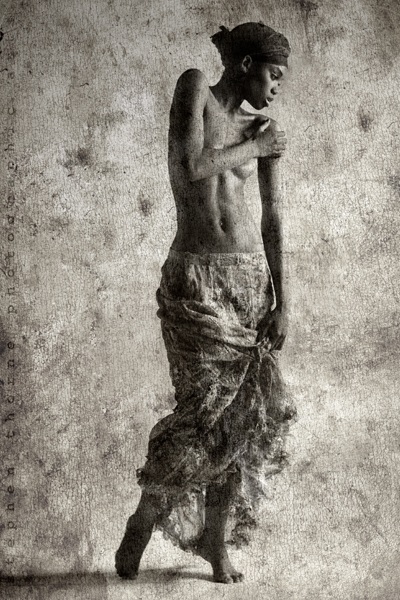
Photographer: Stephen Thorne; Model: Deho
MM Edu: What’s the next step?
Stephen: Shooting more. Finding an agent. Getting a gallery. Shooting more. Publishing a book. Maybe wedding photography to pay the bills. And shooting more.
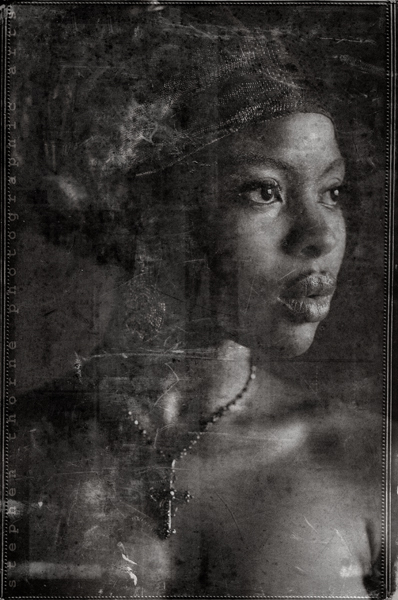
Photographer: Stephen Thorne; Model: Raliat M
MM Edu: What does Model Mayhem mean to you?
Stephen: Model Mayhem has been invaluable to me. I’ve booked the vast majority of my models through this site, and met some great photographers, stylists and makeup artists. I’ve always appreciated the feedback I’ve received here. Picture comments are nice, but what I’ve really valued is the opportunity to have some very constructive, informative exchanges with some brilliant artists from all over the world. It’s really quite amazing.
I love the community element of this site. It doesn’t take itself too seriously, which is good. It feels familiar and smaller than its actual size. Also good. And, generally speaking, I find the membership very helpful and a great resource. Just the other day, I posted a forum asking what to do about some of images that had been stolen. Within three minutes, I had my answer. And when I had follow-up questions, Adam Sternberg out of Las Vegas went the extra mile and came to my rescue. The guy was brilliant. I told him he represents the best of what MM is about.
At its best, MM is informative, entertaining, eye-opening and supportive. I love it.
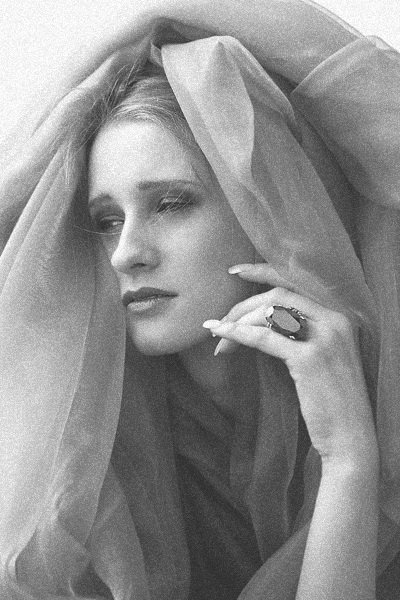
Photographer: Stephen Thorne; Model: Alina L Lapteva
MM Edu: And, finally, are you happy with where you are now?
Stephen: For the first time in my shooting life, what I conceive or see in my head and heart is actually appearing on my screen after a shoot. Part of that is technical ability, but I also feel like all my life experience and effort is crystallizing in my photographs. That’s very satisfying. I’m never completely happy with where I am at any given time. But I have a strong, supportive girlfriend and I’m happier than I’ve been in a long time, I’ll say that.

Photographer: Stephen Thorne; Model: Angelina TC
MM Edu: Thank you for taking the time to share your incredible story with us.
Stephen: Thank you.



August 14, 2012 at 9:28 am, Paul said:
Great interview and very modest!
August 13, 2012 at 10:33 am, Steve Anderson said:
Stephen,
Great read. Lots of respect for all you have done. Looks like you are enjoying the transition in subject. I know your followers will be too.
Best
Steve Anderson
August 12, 2012 at 8:14 pm, Richard Flaskegaard said:
Thanks for sharing “inside information.” Each image we take has bit of ourselves in it. Yours now have special meaning and insight.
August 10, 2012 at 3:48 pm, Andreaj said:
Amazing read, amazing imagery what a treat, thank you for sharing!!
August 10, 2012 at 12:41 pm, neilsnape said:
Nice to know some details about what your about and why you share what you do. Thanks for a glimpse of you. usually we just see your pictures which hint to who you are.
August 10, 2012 at 10:44 am, Du Jour Maria Irving said:
I must say that your work astonished me and I am not easy amused your work is so powerful and full of beauty. New fan for life.
August 10, 2012 at 10:42 am, Du Jour Maria Irving said:
Amazing
May 05, 2012 at 11:16 pm, BryanY said:
Thank you Stephen for sharing your story with us and for making the sacrifice that you did. I greatly enjoyed reading this interview and getting to know you. Your work is outstanding and is only going to get better. Best wishes! – Bryan
April 17, 2012 at 5:33 pm, Dave Vorland said:
I thought of you last night when I saw Donald Margulies’ play “Time Stands Still” at the Guthrie Theater in Minneapolis. The central character is a photographer covering the kinds of things you have, and not being able to give it up. Check it out if you have the opportunity.
April 17, 2012 at 6:23 pm, Sthorne said:
Thanks for that, bud. Giving it up was one of the hardest things I ever had to do.
April 15, 2012 at 8:59 pm, Dboust said:
Are you ever coming to Calgary Stephen? Would love to attend a lecture/workshop, whatever.
April 15, 2012 at 9:25 pm, Sthorne said:
I go to Calgary every year. Dunno when next, but likely before year’s end. Thank you.
April 14, 2012 at 7:59 pm, Lotus said:
Remarkable interview and photographer. Thank you kindly Stephen for sharing your background and insights.
April 14, 2012 at 7:40 pm, Gregg said:
Your words like your images make simple statements that speak volumes.
Thank you. Gregg
April 13, 2012 at 8:26 pm, Julian Wilde said:
Thank you Stephen! I feel like I got to know you in a way that I never could have by only seeing a fraction of your life’s work. Good on ya! 😀 -JULIAN
April 13, 2012 at 8:02 pm, Kyle D. Jackson said:
I’ve seen Stephen present at our photo club here in Ottawa twice, and this interview does a great job to offer those from other areas some insight into his career and photographic work. Well done!
April 13, 2012 at 10:45 am, Keith said:
A very good interview. Your experience helps put our lives in perspective. Thank you for taking the time to share your story.
April 13, 2012 at 9:47 am, Brian Diaz said:
This gave me chills reading it. Thank you, Stephen. You’re an inspiration.